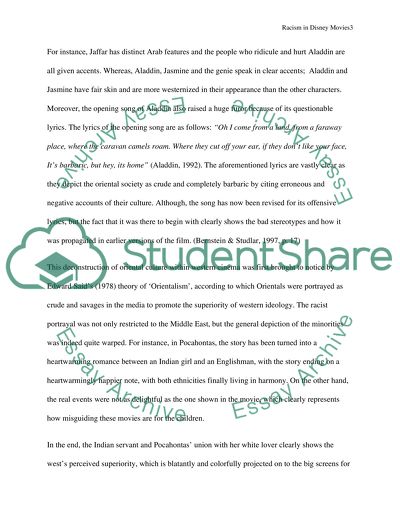Cite this document
(“Racism in Disney Movies Research Paper Example | Topics and Well Written Essays - 1750 words”, n.d.)
Racism in Disney Movies Research Paper Example | Topics and Well Written Essays - 1750 words. Retrieved from https://studentshare.org/visual-arts-film-studies/1477438-racism-in-disney-movies
Racism in Disney Movies Research Paper Example | Topics and Well Written Essays - 1750 words. Retrieved from https://studentshare.org/visual-arts-film-studies/1477438-racism-in-disney-movies
(Racism in Disney Movies Research Paper Example | Topics and Well Written Essays - 1750 Words)
Racism in Disney Movies Research Paper Example | Topics and Well Written Essays - 1750 Words. https://studentshare.org/visual-arts-film-studies/1477438-racism-in-disney-movies.
Racism in Disney Movies Research Paper Example | Topics and Well Written Essays - 1750 Words. https://studentshare.org/visual-arts-film-studies/1477438-racism-in-disney-movies.
“Racism in Disney Movies Research Paper Example | Topics and Well Written Essays - 1750 Words”, n.d. https://studentshare.org/visual-arts-film-studies/1477438-racism-in-disney-movies.


